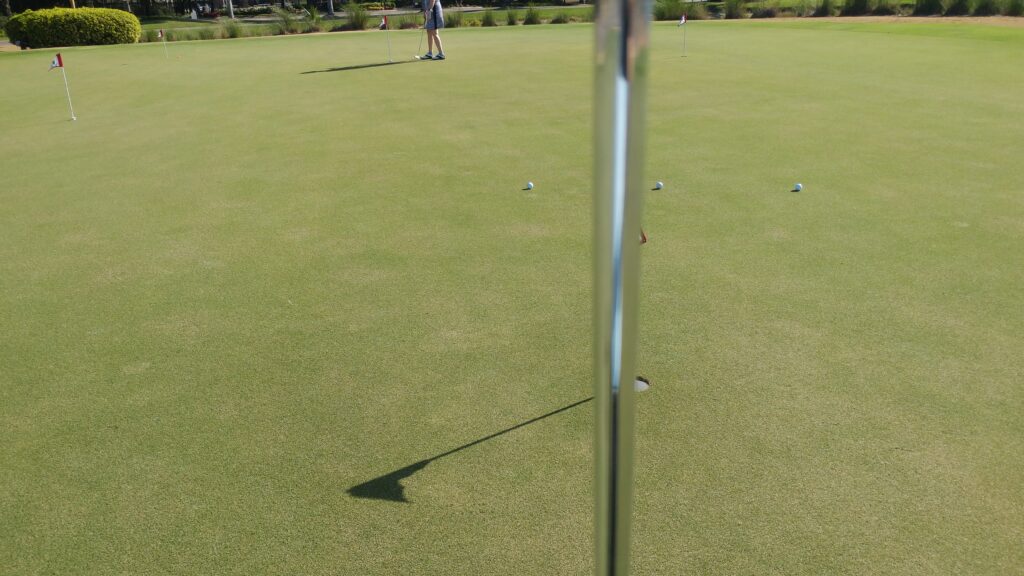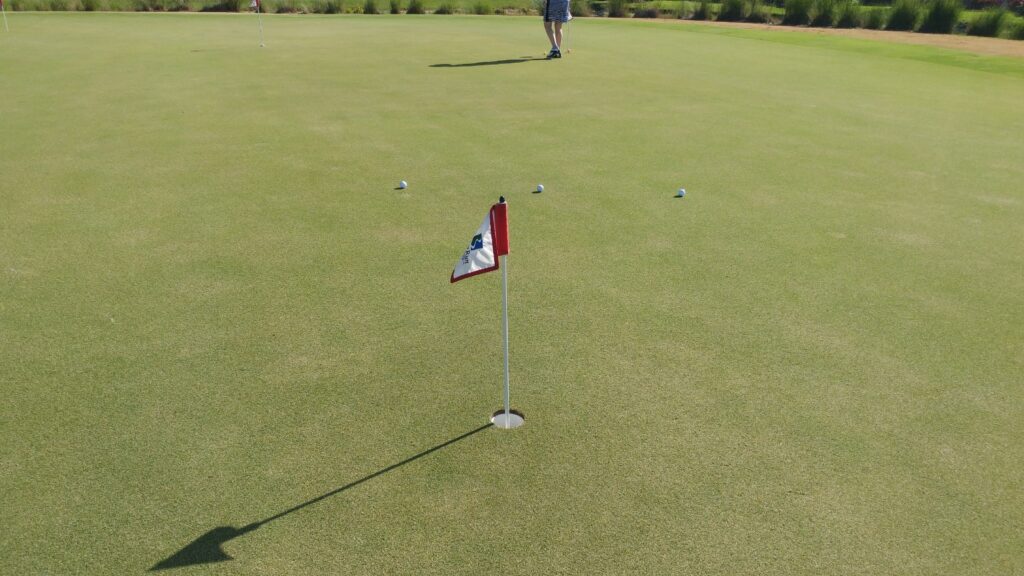Every golfer is faced with this decision in every round of golf. Knowing the correct direction your putts will break could save 1 or 2 strokes, especially for DOWN-HILL PUTTS. This problem occurs when you can see your downhill putt but you can’t determine which way your soft, 3 to 6 foot putt will break. Plumb-Bobbing is a great solution for all putts (down-hill, side-hill or up-hill) when the break is so minor that you need some help to read it. BUT DON’T WASTE YOUR TIME PLUMB-BOBBING IF YOU CAN SEE AN OBVIOUS BREAK.
SOLUTION: Using your putter as a Plumb-Bob, you can determine the correct break but it won’t tell you the actual amount of break which is based on the speed of your putt. FIRST: You need to build confidence in Plumb-Bobbing by practicing with your “CALIBRATED” putter and SECOND: You need to practice a variety of down-hill putts to estimate the AMOUNT OF brake that you can expect.
Plumb-Bobbing Only Works For These Conditions
1/ Consistent Slope of the Green: It only tells you the break of the green exactly on the ground where your feet are standing. So it will only be useful if you can see that the green extending from your feet, past the hole and up to your ball are all on the same plane [as a double break is impossible to read from one point when Plumb-Bobbing].
2/ Using a Calibrated Putter: You need to line up one side of the shaft of your putter with a door frame and rotate the putter until a known side of the shaft lines up exactly with the door frame. Your putter shaft is tapered so the correct side of your putter shaft makes a difference [ie for my calibrated putter, I close one eye to line up the (1) left side of my putter shaft when the (2) face of my putter is pointing directly at my target line. [Every putter will line up with a door frame differently as the putter head for every putter has a different weight.]
3/ Stand Above or Below the Hole with your ball Beyond the Hole: Your ball will break the most as it slows down near the hole. Your Plumb-Bob reading is ONLY measuring the slope on the green where your feet are planted (because you are only measuring the angle that GRAVITY applies to your putter exactly where you are standing).
How to Plumb-Bob
A/ Stand about 4 to 6 feet away from the hole and line the hole up with your ball (using one eye while closing the other eye).
B/ Now without changing standing position, hold your putter with 2 fingers in front of you and line up the calibrated side of the shaft and putter orientation with the center of the hole (using the same eye).
C/ If the upper end of your putter shaft lines up with the exact center of the hole and the center of your ball on the calibrated side of your putter shaft, then your putt should be a straight putt. If the handle end of your putter shaft lines up on the left or right side of the ball, then that side is the HIGH SIDE OF THE GREEN. Your ball will break from the high side back to the hole. So line you putt up on the high side of the slope.
You will build confidence in Plumb-Bobbing if you place 3 balls on a line across a slope above a hole (as in the image below). Plumb-Bob the break for all 3 balls and then putt those balls to prove to yourself that Plumb-Bobbing really works. Of course you also need to practice with a flat leading wrist to putt exactly on your target line. GOLFSTR+ is a perfect training aid to make straight putts. Buy one today at www.GOLFSTR.com

David Letterman: “Why Golf is Better than Sex: You can still make money doing it as a senior.”




[…] Source link […]